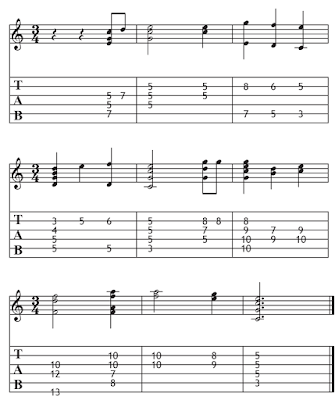You're Stuck at Guitar Because You're NOT Doing THIS Simple Phrase!
In this video, I’m going to show you the fastest way to address working on all of this and it comes out of beginning with the performance of simple "single note line" melodies. The single melodic form of a vocal line or of a primary melodic idea, (from an instrumental part) is critical to start with.
The second stage of development is based around building chords off of the established single note melody. This is more difficult, but can be made easier through two practice directions.
First, you need to discover a small collection of ways to exert second and third notes that will expand the harmonic range. Second, you need to think in respect to velocity, (the change of positions) across the span of the neck.
This lesson will show you how to blast through one of the main reasons that guitar players get stuck in their playing and why guitarists start to feel like they just can’t make decent progress.
What you’ll learn is actually how simple it can be to start incorporating a very easy method of; learning a melody, mapping it out across the neck, working through any melody, (getting up to a level of solid performance and commitment to memory), and finally the really cool part of this will be creating chords around the melody.
The best part is that you don’t need to know any music theory or how to read music and you don’t even need to understand how the neck works.
This exercise uses only your ear and focuses on how harmony is built across the strings using a few common shapes! So, grab your guitar and let’s get started.
EXERCISE 1). MELODY
Our first step will be all about learning a very simple melodic idea that is common and has been performed by many different artists over the years.
For our example, we’re going to check out an old melody written back in the year 1835. This melody has been covered by everyone from Johnny Cash, to Willie Nelson and even Chet Atkins did an instrumental of it. The piece is called, “Just As I Am.”
To get started, let’s focus on playing and learning the basic melody taken from the piece.
So, coming up next I’ve got a great idea to show you that involves building out a melody so that it focuses on getting organized on a group of chords that connect to the part. It’s just like you’ll hear by famous guitarists’ like Chet Atkins or Mark Knopffler...
But first, I want to tell you about a special promotional offer related to my new edition of the; Handouts Collection eBook.
I wanted to take a minute to let you know, that if you want to learn even more about scales and theory I have a great offer for you.
With any donation over $5, or any merchandise purchase from my Tee-Spring store, I’ll send you free copies of THREE of my most popular digital handouts.
One is called, “Harmonized Arpeggio Drills” (it’ll train you on developing your diatonic arpeggios).
Another one is my “Barre Chord” Handout which includes a page showing all the key signatures along with a chord progression that applies barre chords.
Plus, you’ll get my Notation Pack! It has 8 pages of important guitar worksheets for notating anything related to; music charts, guitar chord diagrams, and TAB.
As a BONUS, (from my "Over 40 and Still Can't Play a Scale" video), I'll also throw in a breakdown of all of the chords that are diatonic to the "F Major" scale.
As an EXTRA BONUS for my Phrygian Dominant video, I'll also throw in a breakdown featuring all of the chords that are diatonic to the Phrygian Dominant scale.
Just send me an email off of the contact page of CreativeGuitarStudio.com to let me know about either your donation or your Merchandise purchase and I’ll email you those digital handouts within 24 hrs.
____________________________________________________
EXERCISE 2). BUILDING A HARMONY
The next thing I want to cover involves using tones that will always be able to line up vertically around your melody. Those tones can be used to build outward and create small, medium and large chord ideas. Check out the example below.
You’ll hear this "harmony building" work done by many famous musicians (including guitar players like Mark Knopfler, Chet Atkins and Larry Carlton). When done smoothly and expertly it sounds great. Here’s how it all works.
Keep the melody tones located up at the top (highest pitch) end of the harmony that you're building.
Test play through several lower tones that are available within a 3-fret range and determine the most harmonious note connections.
Intermix single-note segments along with 2 and 3 note chords. Balance the spacing of all of the chords that are used with individual notes with a goal of creating an interesting harmonic flow.
If you know your musical keys, and you are familiar with a lot of chords plus you understand intervals, you'll find that you'll be much faster at producing harmonies.










